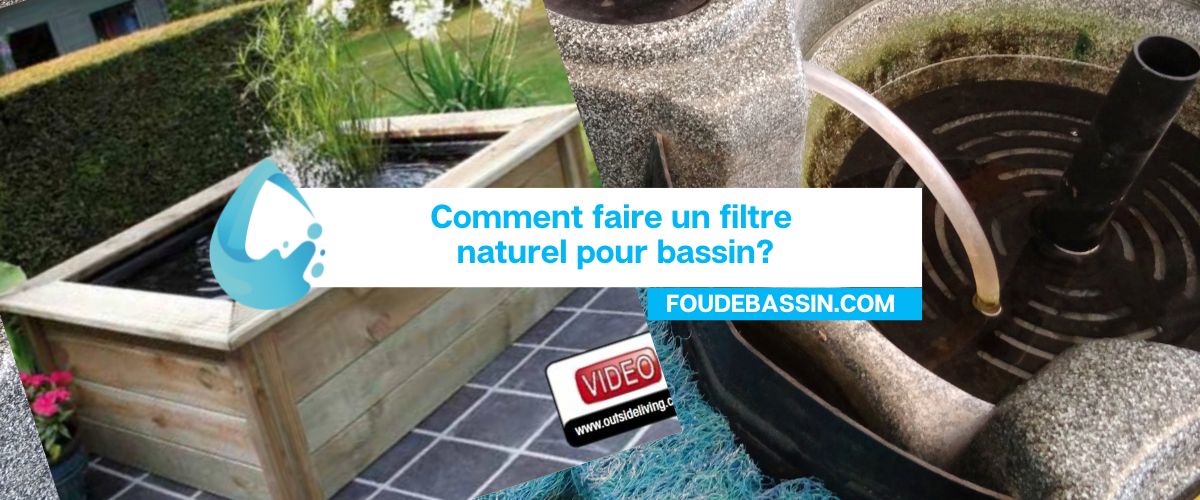Retrouvez ici les indispensables et meilleures ventes pour nos propriétaires de bassin.
Retrouvez ici les indispensables et meilleures ventes pour nos propriétaires de bassin.

A natural pond filter can provide an environmentally friendly and effective solution to maintaining water quality, ensuring a healthy environment for your fish and aquatic plants.
Unlike mechanical filtration systems, a natural filter uses biological processes and natural materials to filter water. In this article, we will explore the different steps to create a natural filter for your pond.
Natural filters offer several advantages:
To create a natural filter you will need the following:
Choose the location : Select a location close to your pond where the filter will be installed. It should be easily accessible for maintenance.
Prepare the container : Use a container or bin large enough to hold all the filter materials. Drill holes in the bottom to allow for drainage.
Add Gravel and Sand : Start with a layer of gravel at the bottom of the container to ensure good drainage. Then add a layer of sand for mechanical filtration.
Add volcanic rocks or porous stones : These materials provide a large surface area for beneficial bacteria to grow. These bacteria break down organic matter and waste in the water.
Planting aquatic plants : Aquatic plants such as reeds, irises or water hyacinths are excellent for absorbing excess nutrients and providing oxygen. Plant them directly in the container among rocks and stones.
Install the water pump : Place a water pump at the bottom of the pond and connect it to the natural filter. The pump will circulate the water through the different filtration layers, ensuring effective cleaning.
Maintain the filter : Check the filter regularly to ensure it is working properly. Remove debris and clean the filter media as needed. Replace dead or diseased plants to maintain filter efficiency.
Aquatic plants play a crucial role in a natural filter:
Creating a natural filter for your pond is an eco-friendly and effective way to maintain clean and healthy water. By using natural materials and promoting biological processes, you can not only improve water quality but also add an aesthetic touch to your garden. At Foudebassin, we are ready to provide you with all the advice and materials necessary to carry out your natural filter project. For more information and assistance, do not hesitate to visit our blog or contact us directly.
Aquipond Greenstab - Natural treatment against pond algae It is a natural product that helps limit algae at any time. It also has a prevent...
View full detailsReduces the layer of silt in the pond by at least 40% Easy to use with less impact on biodiversity Prevents fermentation, bad odors. pH ...
View full detailsOrganic dye to block plant growth by limiting photosynthesis ORGANIC PRODUCT NON TOXIC TO HUMANS (DIVING) AND FISH. 100% NATURAL AND BIODE...
View full detailsThe positive effects of barley straw have been known to water enthusiasts for a long time. But currently barley straw is difficult to find and i...
View full detailsReduces at least 40% of the layer of silt in the pond Easy to use with less impact on biodiversity Prevents fermentation, bad odors. ...
View full details
Comments
Leave a comment